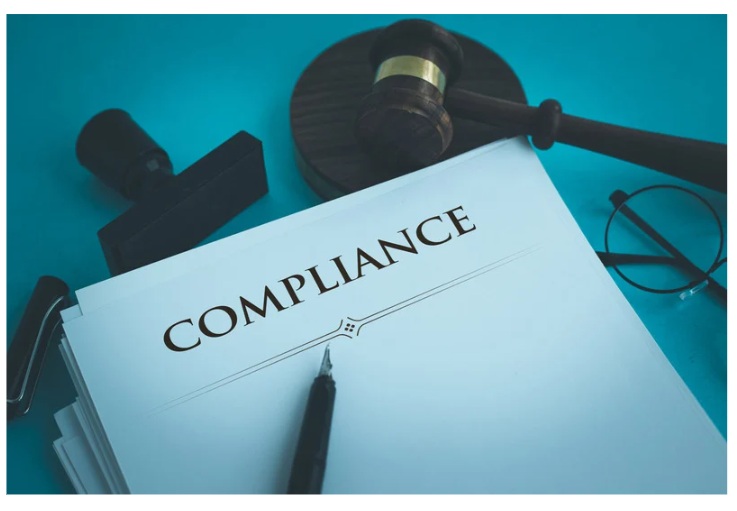
Frequently Asked Questions About Virtual Cyber Security Managers (vCSM)
In an increasingly interconnected world, where businesses rely heavily on digital infrastructure, the need for robust cybersecurity measures has never been greater. With cyber threats evolving at an alarming pace, organizations must stay one step ahead to protect their sensitive data and operations. One innovative solution that has gained traction in recent years is the Virtual Cyber Security Manager (vCSM). This article aims to address frequently asked questions about vCSMs, shedding light on what they are, how they work, and why they are becoming a crucial asset in the fight against cyber threats.
- What is a Virtual Cyber Security Manager (vCSM)?
A Virtual Cyber Security Manager, or vCSM, is a cloud-based, AI-driven cybersecurity solution designed to provide organizations with comprehensive cyber threat management. It functions as a virtual entity that monitors, analyzes, and safeguards an organization’s digital assets and infrastructure in real-time. Essentially, a vCSM serves as an intelligent, 24/7 guardian against cyber threats, offering a proactive defense strategy.
- How does a vCSM work?
At its core, a vCSM operates by employing artificial intelligence (AI) and machine learning (ML) algorithms to analyze vast amounts of data in real-time. Here’s a simplified breakdown of how it works:
Data Collection: The vCSM collects data from various sources within the organization, including network logs, user activity, and system behavior.
Analysis: Using AI and ML, the vCSM continuously analyzes this data to detect unusual patterns or anomalies. It identifies potential threats, such as unauthorized access attempts or suspicious activity.
Threat Assessment: Once a potential threat is identified, the vCSM assesses its severity and likelihood of success. It assigns risk scores to prioritize responses.
Response: Based on the assessment, the vCSM can take automated actions to mitigate the threat, such as blocking suspicious IP addresses, isolating affected devices, or alerting security personnel for manual intervention.
Learning and Adaptation: Over time, the vCSM learns from its experiences and adapts its algorithms to improve threat detection accuracy continually.
- Why do organizations need a vCSM?
The digital landscape is fraught with cybersecurity risks, and organizations of all sizes are vulnerable to attacks. Here are some compelling reasons why businesses are turning to vCSMs:
Constant Vigilance: Cyber threats never sleep. A vCSM provides round-the-clock monitoring and immediate response, reducing the risk of undetected breaches.
Cost-Efficiency: Hiring and training an in-house cybersecurity team can be expensive. A vCSM offers cost-effective protection, requiring no salaries or benefits.
Scalability: vCSMs can scale with your organization’s needs. Whether you’re a small startup or a large enterprise, a vCSM can adapt to your requirements.
Expertise: vCSMs incorporate the latest cybersecurity expertise and best practices, ensuring that your organization benefits from up-to-date protection.
- Is a vCSM a replacement for human cybersecurity professionals?
No, a vCSM is not a replacement for human cybersecurity professionals but a valuable complement. While vCSMs excel at continuous monitoring and rapid response, human cybersecurity experts bring critical thinking, strategic planning, and in-depth knowledge to the table. A combination of both human expertise and automated tools like vCSMs offers the most robust cybersecurity defense.
- How does a vCSM handle false positives?
False positives, or alerts triggered by benign activities mistaken for threats, can be a nuisance for cybersecurity teams. However, modern vCSMs are equipped with advanced algorithms that reduce false positives to a minimum. They achieve this through machine learning, which enables them to refine their threat detection criteria over time based on historical data and feedback from security professionals.
- Can vCSMs protect against all types of cyber threats?
While vCSMs are highly effective against a wide range of cyber threats, no cybersecurity solution can guarantee absolute protection. Cyber threats are constantly evolving, and attackers employ increasingly sophisticated tactics. Nevertheless, vCSMs play a crucial role in minimizing risks by quickly identifying and mitigating threats as they emerge.
- Are vCSMs compatible with existing cybersecurity tools?
Yes, vCSMs are designed to integrate seamlessly with existing cybersecurity tools and infrastructure. They can work alongside firewalls, intrusion detection systems, antivirus software, and other security solutions, enhancing the overall security posture of an organization.
- How do organizations choose the right vCSM for their needs?
Selecting the right vCSM for your organization requires careful consideration. Here are some key factors to keep in mind:
Scalability: Ensure the vCSM can scale with your organization’s growth.
Integration: Verify that it can integrate with your existing cybersecurity tools.
Customization: Look for a vCSM that allows customization to adapt to your specific security requirements.
Cost-effectiveness: Consider the pricing structure and whether it fits your budget.
Vendor Reputation: Research the vendor’s reputation, customer reviews, and track record in the cybersecurity industry.
Compliance: If your organization operates in a regulated industry, ensure the vCSM can help you meet compliance requirements.
- Are vCSMs suitable for small businesses?
Yes, vCSMs are suitable for small businesses. In fact, they can be particularly beneficial for smaller organizations with limited cybersecurity resources. They offer enterprise-level protection without the need for a dedicated cybersecurity team, making them a cost-effective choice for businesses of all sizes.
- Are vCSMs a one-time investment, or do they require ongoing fees?
Most vCSM solutions operate on a subscription-based model, requiring ongoing fees. These fees cover continuous updates, support, and access to the latest threat intelligence. The subscription cost can vary based on the features, scale, and complexity of the vCSM solution chosen.
- How does a vCSM stay up-to-date with emerging threats?
To stay up-to-date with emerging threats, vCSMs rely on a combination of methods:
Threat Intelligence Feeds: They subscribe to threat intelligence feeds that provide real-time information about new threats and vulnerabilities.
Machine Learning: vCSMs use machine learning algorithms to adapt to new threat patterns and behaviors as they emerge.
Vendor Updates: Regular updates from the vCSM vendor ensure that the system is equipped with the latest threat detection capabilities.
- Can vCSMs protect against insider threats?
Yes, vCSMs can play a significant role in protecting against insider threats. They monitor user activity and can detect unusual behavior patterns that may indicate insider threats, such as unauthorized access attempts or data exfiltration.
In conclusion, Virtual Cyber Security Managers (vCSMs) represent a critical component of modern cybersecurity strategies. They provide organizations with the ability to proactively defend against a rapidly evolving threat landscape, offering round-the-clock monitoring and automated threat response. While they are not a replacement for human cybersecurity professionals, vCSMs complement human expertise and enhance an organization’s overall security posture. As businesses continue to face cyber threats, vCSMs are poised to become an indispensable tool in the fight against digital adversaries, helping safeguard sensitive data and digital operations in an increasingly connected world.
Contact Cyber Defense Advisors to learn more about our Cybersecurity Manager (vCSM) solutions.





